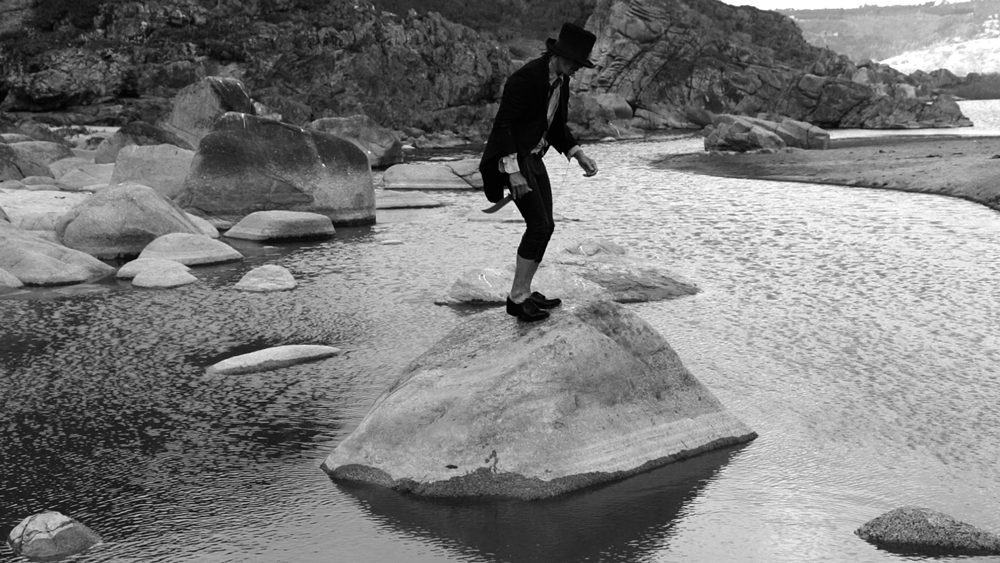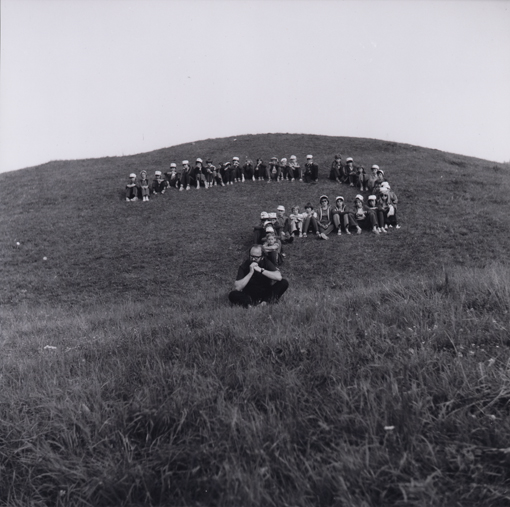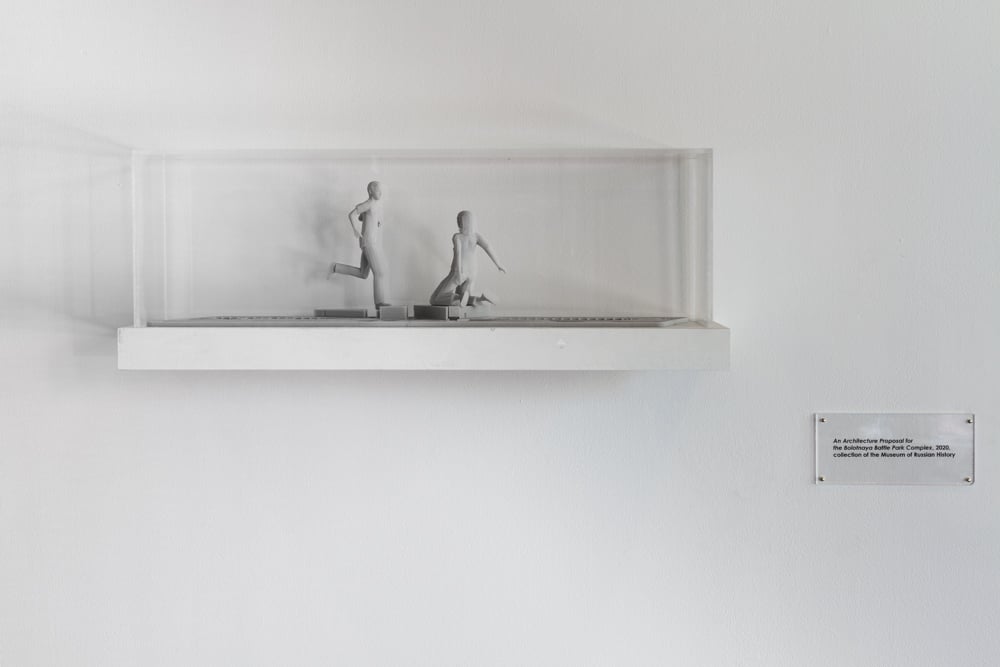
© » KADIST
Gregory Halpern
Gregory Halpern spent five years shooting ZZYZX , and another year editing the results, from an estimated thousand rolls of film, about half of which were shot in the final year after his Guggenheim Fellowship enabled him to live in California. According to Halpern, the series “is grounded in reality, but it occupies an in-between space, between documentary and a certain sense of mystery.” …“I see ZZYZX as part of a continuum but edging a little closer towards fiction.” The series title is borrowed from the village Zzyzx (pronounced zye-zix), formerly Soda Springs, but rechristened by the mineral water pioneer, Curtis Howe Springer, in 1944. The eccentric Springer named it after what he claimed to be the last word in the English language.

© » KADIST
Gregory Halpern
Gregory Halpern spent five years shooting ZZYZX , and another year editing the results, from an estimated thousand rolls of film, about half of which were shot in the final year after his Guggenheim Fellowship enabled him to live in California. According to Halpern, the series “is grounded in reality, but it occupies an in-between space, between documentary and a certain sense of mystery.” …“I see ZZYZX as part of a continuum but edging a little closer towards fiction.” The series title is borrowed from the village Zzyzx (pronounced zye-zix), formerly Soda Springs, but rechristened by the mineral water pioneer, Curtis Howe Springer, in 1944. The eccentric Springer named it after what he claimed to be the last word in the English language.

© » KADIST
Gregory Halpern
Gregory Halpern spent five years shooting ZZYZX , and another year editing the results, from an estimated thousand rolls of film, about half of which were shot in the final year after his Guggenheim Fellowship enabled him to live in California. According to Halpern, the series “is grounded in reality, but it occupies an in-between space, between documentary and a certain sense of mystery.” …“I see ZZYZX as part of a continuum but edging a little closer towards fiction.” The series title is borrowed from the village Zzyzx (pronounced zye-zix), formerly Soda Springs, but rechristened by the mineral water pioneer, Curtis Howe Springer, in 1944. The eccentric Springer named it after what he claimed to be the last word in the English language.

© » KADIST
Gregory Halpern
Gregory Halpern spent five years shooting ZZYZX , and another year editing the results, from an estimated thousand rolls of film, about half of which were shot in the final year after his Guggenheim Fellowship enabled him to live in California. According to Halpern, the series “is grounded in reality, but it occupies an in-between space, between documentary and a certain sense of mystery.” …“I see ZZYZX as part of a continuum but edging a little closer towards fiction.” The series title is borrowed from the village Zzyzx (pronounced zye-zix), formerly Soda Springs, but rechristened by the mineral water pioneer, Curtis Howe Springer, in 1944. The eccentric Springer named it after what he claimed to be the last word in the English language.

© » KADIST
Gregory Halpern
Gregory Halpern spent five years shooting ZZYZX , and another year editing the results, from an estimated thousand rolls of film, about half of which were shot in the final year after his Guggenheim Fellowship enabled him to live in California. According to Halpern, the series “is grounded in reality, but it occupies an in-between space, between documentary and a certain sense of mystery.” …“I see ZZYZX as part of a continuum but edging a little closer towards fiction.” The series title is borrowed from the village Zzyzx (pronounced zye-zix), formerly Soda Springs, but rechristened by the mineral water pioneer, Curtis Howe Springer, in 1944. The eccentric Springer named it after what he claimed to be the last word in the English language.

© » KADIST
Park Chan-Kyong
Park Chan-Kyong’s otherworldly film Belated Bosal primarily follows two women as they navigate their way up a spectral mountain and through what appears to be a history museum or nuclear disaster bunker. They converge to jointly perform a funeral rite in a shipping container, which a group of artisans temporarily convert into a makeshift Buddhist temple, replete with traditional paintings. Shot in crisp and densely detailed black-and-white negative, each frame is lit by the format’s spooky incandescence: shadows are white and the sun is black, as if the world were being viewed through X-ray, infrared camera or a plutonium-sensitive film.

© » KADIST
Gregory Halpern
Gregory Halpern spent five years shooting ZZYZX , and another year editing the results, from an estimated thousand rolls of film, about half of which were shot in the final year after his Guggenheim Fellowship enabled him to live in California. According to Halpern, the series “is grounded in reality, but it occupies an in-between space, between documentary and a certain sense of mystery.” …“I see ZZYZX as part of a continuum but edging a little closer towards fiction.” The series title is borrowed from the village Zzyzx (pronounced zye-zix), formerly Soda Springs, but rechristened by the mineral water pioneer, Curtis Howe Springer, in 1944. The eccentric Springer named it after what he claimed to be the last word in the English language.

© » KADIST
Gregory Halpern
Gregory Halpern spent five years shooting ZZYZX , and another year editing the results, from an estimated thousand rolls of film, about half of which were shot in the final year after his Guggenheim Fellowship enabled him to live in California. According to Halpern, the series “is grounded in reality, but it occupies an in-between space, between documentary and a certain sense of mystery.” …“I see ZZYZX as part of a continuum but edging a little closer towards fiction.” The series title is borrowed from the village Zzyzx (pronounced zye-zix), formerly Soda Springs, but rechristened by the mineral water pioneer, Curtis Howe Springer, in 1944. The eccentric Springer named it after what he claimed to be the last word in the English language.

© » KADIST
Jung Yoonsuk
Tomorrow by Jung Yoonsuk is a two-channel video installation, observing the two different sites of factories, one in the mannequin reform factory in Seoul, Korea, and the other in a sex doll factory in Shenzhen, China. The artist’s research began in 2016 when he encountered articles, and some dystopian images, about a “retired sex doll”, a spooky, deformed dummy with big breasts, that stood in an agricultural field backdrop of a high-rise apartment complex in Chengdu, China. Jung’s work explores the factory scene, the (mostly female) workers and their labor, the doll’s artificiality, and human-like eccentricities.

© » KADIST
Gregory Halpern
Gregory Halpern spent five years shooting ZZYZX , and another year editing the results, from an estimated thousand rolls of film, about half of which were shot in the final year after his Guggenheim Fellowship enabled him to live in California. According to Halpern, the series “is grounded in reality, but it occupies an in-between space, between documentary and a certain sense of mystery.” …“I see ZZYZX as part of a continuum but edging a little closer towards fiction.” The series title is borrowed from the village Zzyzx (pronounced zye-zix), formerly Soda Springs, but rechristened by the mineral water pioneer, Curtis Howe Springer, in 1944. The eccentric Springer named it after what he claimed to be the last word in the English language.
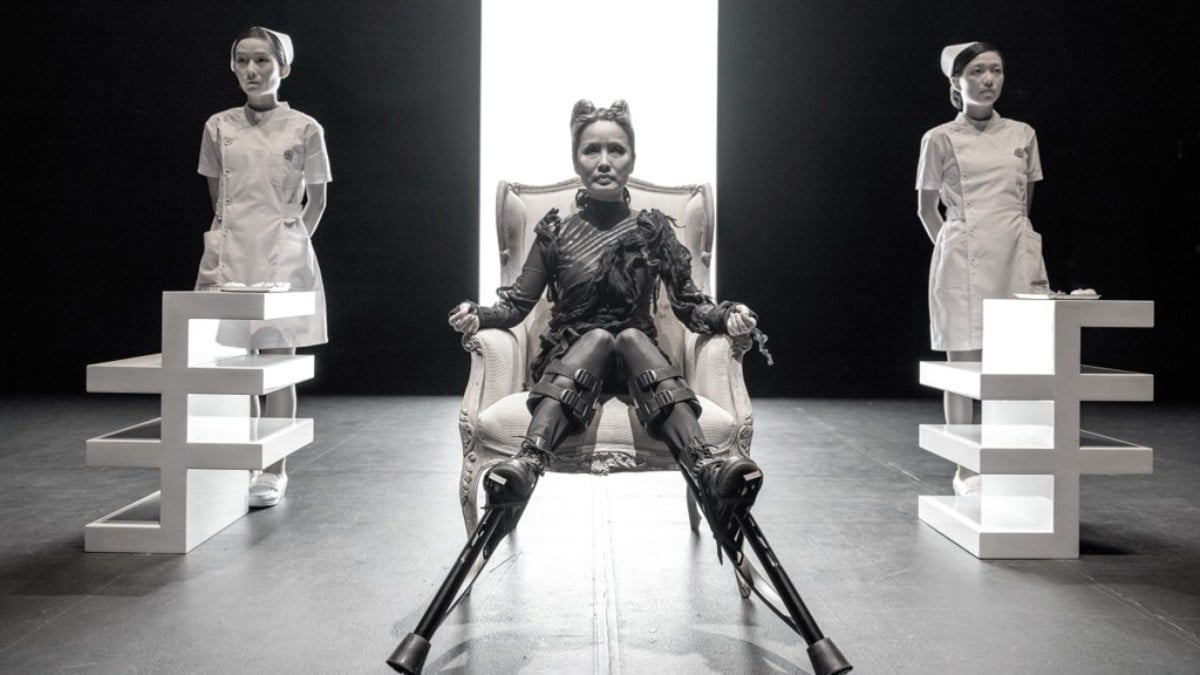
© » KADIST
Angela Su
Drawing & Print (Drawing & Print)
In the first part of Cosmic Call by Angela Su the voiceover proposes in a neutral, documentary-like tone, a series of stories to rethink the way we usually understand, justify, or place blame for epidemiological events. Comets carrying an infective bacterium are linked with the invasion of viruses—our current nemeses—coming from outer space. Second-century BCE medicinal writings correlated the appearance of 29 comets over 300 years with events including plague and drought.

© » KADIST
Gregory Halpern
Gregory Halpern spent five years shooting ZZYZX , and another year editing the results, from an estimated thousand rolls of film, about half of which were shot in the final year after his Guggenheim Fellowship enabled him to live in California. According to Halpern, the series “is grounded in reality, but it occupies an in-between space, between documentary and a certain sense of mystery.” …“I see ZZYZX as part of a continuum but edging a little closer towards fiction.” The series title is borrowed from the village Zzyzx (pronounced zye-zix), formerly Soda Springs, but rechristened by the mineral water pioneer, Curtis Howe Springer, in 1944. The eccentric Springer named it after what he claimed to be the last word in the English language.

© » KADIST
Gregory Halpern
Gregory Halpern spent five years shooting ZZYZX , and another year editing the results, from an estimated thousand rolls of film, about half of which were shot in the final year after his Guggenheim Fellowship enabled him to live in California. According to Halpern, the series “is grounded in reality, but it occupies an in-between space, between documentary and a certain sense of mystery.” …“I see ZZYZX as part of a continuum but edging a little closer towards fiction.” The series title is borrowed from the village Zzyzx (pronounced zye-zix), formerly Soda Springs, but rechristened by the mineral water pioneer, Curtis Howe Springer, in 1944. The eccentric Springer named it after what he claimed to be the last word in the English language.

© » KADIST
Sahej Rahal
Drawing & Print (Drawing & Print)
Within the narrative of Sahej Rahal’s The rocks we will find, beings perform absurd acts in derelict corners of the city, emerging into the everyday as if from the cracks of our civilization, transforming them into liminal sites of ritual, and challenging ways in which we experience time and space. The temporal acts and their residue become primary motifs in his practice. The characters that inhabit these performances bare indices to different cultures, mythologies and pop culture.

© » KADIST
Prabhakar Pachpute
Prabhakar Pachpute was born in 1986 and raised in Chandrapur (Maharashtra), India, a place known as ‘The City of Black Gold’, where his family has worked for three generations in one of the oldest mines in the country. Currently, he lives and works in Mumbai. He has done his Bachelors in Fine Arts from I. K. S. University, Khairagarh (Chhattisgarh) in 2009 and Masters from M. S. University Baroda (Gujrat) in 2011.

© » KADIST
Arseny Zhilyaev
This work was conceived by Zhilyaev as part of the M. I. R.: Polite Guests from the Future exhibition. This iteration of the imagined Museum of Russian History (M. I. R.) is seen from a distant future standpoint. The Russian word ‘mir’ means both peace as well as ‘the world’, and is also the name of the first space station to ever orbit earth.
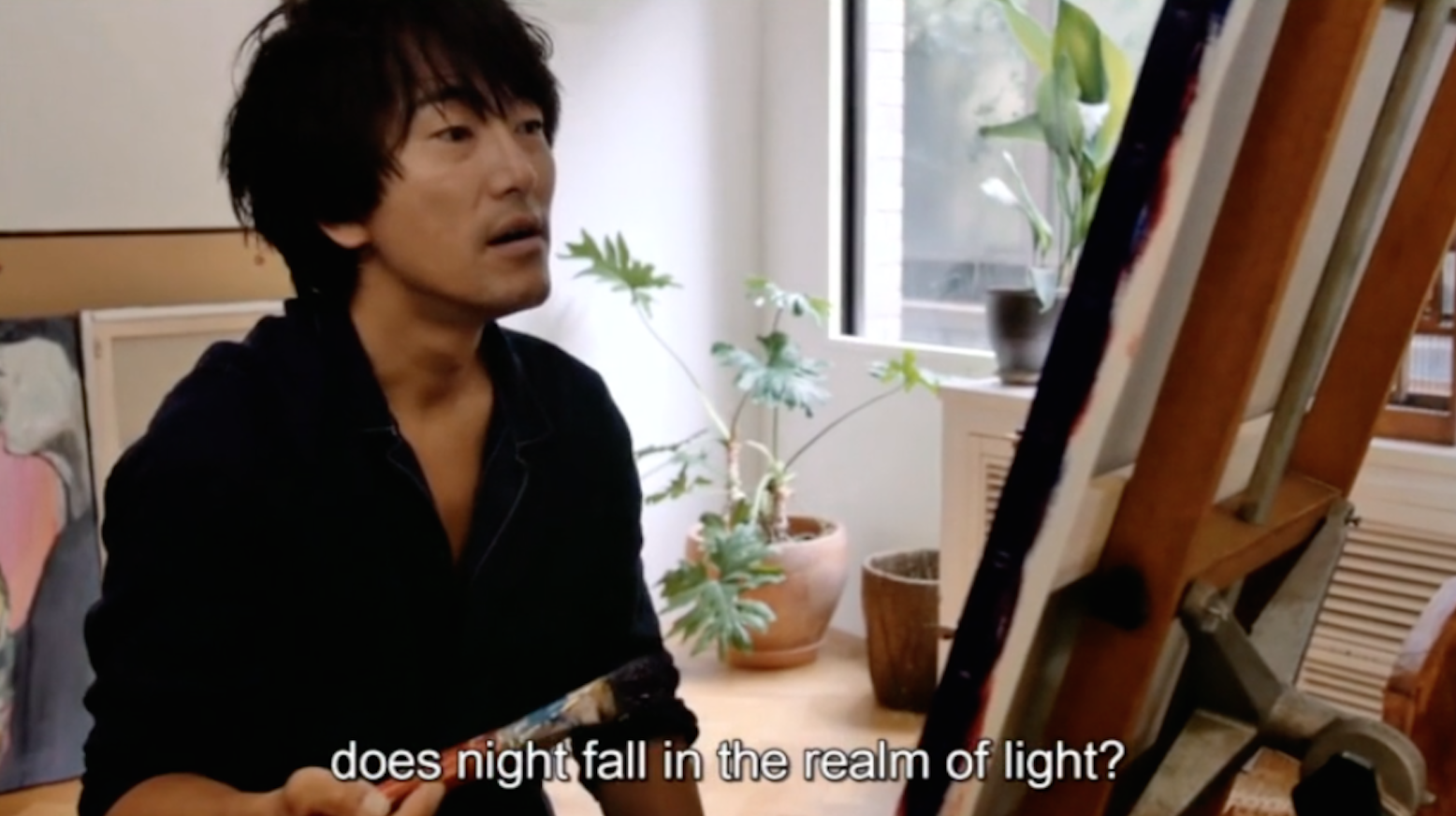
© » KADIST
Aki Kondo
Hikari (Light) (2015) depicts a fantastical and wrenching story about Juneko, a terminally ill young woman who communicates with her lover, a painter, through a portrait of her produced shortly after her death. As Juneko becomes sicker, her hair begins to fall out, a symptom of her unnamed illness. As her condition deteriorates, the film toggles back and forth with the animated story of Mogeji, a white strand of hair inhabiting Juneko’s body who becomes anthropomorphized through Kondo’s animation and recounts his own story of mortality and loss.

© » KADIST
Amie Siegel
Winter is a film installation of multiple tenses—shot in the recent past, depicting an unknown future, unfolding (and changing) in the present of the exhibition. Shot in the white-washed homes of New Zealand architect Ian Athfield, including his own communal compound high above Wellington harbor, the film suggests various temporal and cultural conditions of instability, hinting at concerns of global warming and nuclear accidents, pushing at the boundaries of science fiction, stripped of narrative explication and causal explanation.

© » KADIST
Bobo
Simon & Gus by Bobo is a binaural and fantastical artwork that tells the story of a sea steading maker-hobbyist as told from the perspective of an arduino board, and a mars dwelling stop motion animator as told from the perspective of a stop motion armature. The stop motion animator attends an artist residency on the red planet, and eventually sets out to start his own artist colony (a martian animation studio) with stupefying hubris. The result has disastrous consequences, with the martian ghosts eventually swallowing his soul, and his armature gaining full access to the animator’s motor skills and control of his ability to move.

© » KADIST
Masaya Chiba
Fairy #2 (2011) depicts a surreal scene of roughly assembled household ephemera, potted plants, and a faintly visible figure rendered in thin red line. The picture shows a grouping of tables and stools arranged in a dense cluster. A collection of objects, all brown or burlap-hued, cover their surfaces: ceramic pots, wooden planks, roughly geometric wooden sculptures, and even a small figure that perches precariously atop of miniature cube alongside a forked wood finish form.

© » KADIST
Yin-Ju Chen
Drawing & Print (Drawing & Print)
This work includes sketches for Extrastellar Evaluations , the project she produced at Kadist. Extrastellar Evaluations introduces Plato’s mythical state of Atlantis as the theoretical birthplace of conceptual art. Well-known and obscure epistemological notions from the annals of cosmology and mysticism guided and informed her research in the Bay Area during the Kadist residency at the beginning of 2016.

© » KADIST
Julius Koller
Wordplay was a central focus of Koller’s work, in particular the acronym U. F. O, which he adapted in his diagrammatic drawings to stand variously for Univerzálna Futurologická Organizácia (Universal Futurological Organization, 1972–3), Univerzálny Filozoficky Ornament (Universal Philosophical Ornament, 1978) or Underground Fantastic Organization (1975), and which also appeared in a series of slapsticky self-portraits titled ‘U. F. O.–naut’ (1970–2007). These infinite variations on a common cipher constituted an insistent incantation of the Utopian principle.

© » KADIST
Paul Kos
Taking its title from the eponymous mythological creature—famously featured as sea nymphs in Homer’s Odyssey. Sirens exist in literature across many cultures including Ancient Greece and India, described as part bird and part woman, or like a mermaid. They were said to charm men by their song, and, having first lulled them to sleep, tear them to pieces.

© » KADIST
Fang Lu
Canton Novelty by Fang Lu captures the adventure of a group of three girls, Ruohan, Lily and Zoe on a summer vacation in Guangzhou, China. Throughout the course of the trip, they film themselves with their cell phones singing in a karaoke room, shopping at a hardware store, sitting at a park, hanging out in a hotel room and exploring a neighborhood looking at vacant apartment ads. Although their days may seem uneventful, the girls seemingly discover the ability to perform impossible “miracles,” including cooking a full pot of rice from three grains, summoning objects to appear and disappear, and turning off street lamps on command.

© » KADIST
Jonathan Monk
Drawing & Print (Drawing & Print)
Meeting #100 is one in a series of text works by Jonathan Monk. In this series, the artist attempts to organize meetings somewhere in the world. The audience is given the details of a meeting—the place, date and time—and nothing more.

© » KADIST
Lynn Hershman Leeson
Using the seminal 1958 film Vertigo as a launchpad, Lynn Hershman Leeson explores the blurred lines between fact and fantasy in VertiGhost , a film commissioned by the Fine Arts Museums in San Francisco. VertiGhost features the re-creation of select scenes from Vertigo (which takes place in San Francisco), documentation of the life of a painting by Amedeo Modigliani in the Legion of Honor’s collection that was enshrouded by questions of authenticity, as well as interviews—including with the original film’s star Kim Novak— about the construction of realities in life and art. By thoughtfully overlaying these conversations and events, Hershman Leeson distills complex conversations around identity and authenticity into concise insights in just over 12 minutes.

© » KADIST
Adrian Villar Rojas
Drawing & Print (Drawing & Print)
Based on historical prophecies and fantasy, the artist creates apocalyptic scenarios that posit an enigmatic world plagued by social, political, and environmental upheaval. Untitled (Set of Six Drawings) (2012) is an intricate watercolor of a child sitting cross-legged with its head stuck inside a giant mask resembling a duck head covered with eyes. It looks like a scene snatched from science fiction or a surreal dream; it is tempting to see in it some kind of warning sign, or an ominous vision of the future.

© » KADIST
Carlos Amorales
Drawing & Print (Drawing & Print)
Produced on the occasion of an exhibition at ARTIUM of Alava, Basque Centre-Museum of Contemporary Art, this deck of cards is a selection of images from Carlos Amorales’s Liquid Archive. and abstract silhouetted motifs, in a black and white palette, are combined to create a world lodged between fantasy and reality typical of the tarot game. Airplanes, letters, naked women, Osama Bin Laden, Che Guevara, mythological figures, skulls, wrestlers’ masks are some of the visuals that populate this printed object.

© » KADIST
Xiaoyun Chen
In the video work Drag, a man in a dark room pulls on the end of a rope. In midst of sounds of heavy breathing, the camera presents alternating scenes of a man and the shadow of a man wearing a long, pointed hat cast against a wall. Insinuating a sinister mood, the man and the shadow struggle to control the scene through alternating tugs and releases of a rope.
Gregory Halpern
Gregory Halpern is an acclaimed American photographer whose practice is predicated on wandering...
Carlos Amorales
- year born: 1970
- gender: male
- nationality: Mexican
- home town: Mexico City, Mexico
Sahej Rahal
Mumbai-based artist Sahej Rahal’s installations, films, photographs, and performances are part of an elaborate personal mythology he has created by drawing characters from a range of sources, from local legends to science fiction...
Taro Izumi
Taro Izumi was born in 1976 in Nara (Japan)...
Jung Yoonsuk
As one of the notable Korean artists of his generation working across contemporary visual art and documentary cinema, Jung Yoonsuk has created internationally recognized documentary films like Lash (2022), Bamseom Pirates Seoul Inferno (2017), Non-Fiction Diary (2013), and Hometown of Stars (2010)...
Lynn Hershman Leeson
- location: San Francisco, California
- year born: 1941
- gender: female
- nationality: American
- home town: Cleveland, Ohio
Fang Lu
Fang Lu uses intimacy as a place for self-expression in her videos and draws out mundane moments from everyday life as a strategy to heighten one’s awareness of existence from the rest of the world...
Xiaoyun Chen
- location: Hangzhou, China
- year born: 1971
- gender: male
- nationality: Chinese
- home town: Hubei Province, China
Paul Kos
- location: San Francisco, California
- year born: 1942
- gender: male
- nationality: American
Park Chan-Kyong
Artist and filmmaker Park Chan-kyong was born in Seoul under the reign of Park Chung-hee, whose authoritarian rule transformed South Korea from an impoverished, war-torn country into what the artist describes as a ‘militaristic, repressive, modern state.’ The shadows of Japanese occupation and the Korean War loomed large over the period, driving the call for nationalism and productivity...
Philip-Lorca diCorcia
The works of Philip-Lorca diCorcia oscillate between two possible definitions of photography – from a recording system in the tradition of documentary and a system of representation in the tradition of fiction...
Masaya Chiba
Masaya Chiba utilizes painting, sculpture, and installation to create dreamlike works that respond to Surrealism traditions while also exploring the limits of representation and translation...
Amie Siegel
- year born: 1974
- gender: female
- nationality: American
- home town: Chicago, Illinois
Jonathan Monk
- location: Berlin, Germany
- year born: 1969
- gender: male
- nationality: British
- home town: Leicester, United Kingdom
Bobo
Bobo is an art collective constituting the artists Nick Payne, Andrew Gillespie, and Phil Cote, and while as a collective entity they are relatively new to the art world, they have been highly influential to many younger NY artists...
Yin-Ju Chen
- year born: 2011
- gender: female
- nationality: American & Taiwanese
Prabhakar Pachpute
Prabhakar Pachpute calls attention to issues concerning land politics, industry, and labor through a multimedia practice that includes drawing, painting, sculpture, animation, and murals...
Julius Koller
- location: Pieštany, Slovenská Republika
- year born: 1939
- gender: male
- nationality: Slovakian
Arseny Zhilyaev
Arseny Zhilyaev is arguably one of the most influential contemporary Russian artists of his generation...
Angela Su
Angela Su’s practice is derived from her two divergent backgrounds–she received a degree in biochemistry in Canada before pursuing visual arts...
Aki Kondo
Aki Kondo utilizes animation, video, and mixed media to explore such varied topics as intimacy, loss, and the human body...
Adrian Villar Rojas
- year born: 1980
- gender: male
- nationality: Argentinean
-
-
1980-1989
-
2000-2009
Carlos Amorales
Drawing & Print
2005(Drawing & Print) Produced on the occasion of an exhibition at ARTIUM of Alava, Basque Centre-Museum of Contemporary Art, this deck of cards is a selection of images from Carlos Amorales’s Liquid Archive...
Taro Izumi
2009Steak House is a video representing two small puppets smearing the artist’s face with paint while he is sleeping...
-
2010-2019
Yin-Ju Chen
Drawing & Print
2011(Drawing & Print) This work includes sketches for Extrastellar Evaluations , the project she produced at Kadist...
Masaya Chiba
2011Fairy #2 (2011) depicts a surreal scene of roughly assembled household ephemera, potted plants, and a faintly visible figure rendered in thin red line...
Adrian Villar Rojas
Drawing & Print
2012(Drawing & Print) Based on historical prophecies and fantasy, the artist creates apocalyptic scenarios that posit an enigmatic world plagued by social, political, and environmental upheaval...
Amie Siegel
2013Winter is a film installation of multiple tenses—shot in the recent past, depicting an unknown future, unfolding (and changing) in the present of the exhibition...
Carlos Amorales
2014Carlos Amorales, based in Mexico City, works in many media and combinations thereof, including video, drawing, painting, photography, installation, animation, and performance...
Sahej Rahal
Drawing & Print
2015(Drawing & Print) Within the narrative of Sahej Rahal’s The rocks we will find, beings perform absurd acts in derelict corners of the city, emerging into the everyday as if from the cracks of our civilization, transforming them into liminal sites of ritual, and challenging ways in which we experience time and space...
Gregory Halpern
2016Gregory Halpern spent five years shooting ZZYZX , and another year editing the results, from an estimated thousand rolls of film, about half of which were shot in the final year after his Guggenheim Fellowship enabled him to live in California...
Gregory Halpern
2016Gregory Halpern spent five years shooting ZZYZX , and another year editing the results, from an estimated thousand rolls of film, about half of which were shot in the final year after his Guggenheim Fellowship enabled him to live in California...
Gregory Halpern
2016Gregory Halpern spent five years shooting ZZYZX , and another year editing the results, from an estimated thousand rolls of film, about half of which were shot in the final year after his Guggenheim Fellowship enabled him to live in California...
Gregory Halpern
2016Gregory Halpern spent five years shooting ZZYZX , and another year editing the results, from an estimated thousand rolls of film, about half of which were shot in the final year after his Guggenheim Fellowship enabled him to live in California...
Gregory Halpern
2016Gregory Halpern spent five years shooting ZZYZX , and another year editing the results, from an estimated thousand rolls of film, about half of which were shot in the final year after his Guggenheim Fellowship enabled him to live in California...
Gregory Halpern
2016Gregory Halpern spent five years shooting ZZYZX , and another year editing the results, from an estimated thousand rolls of film, about half of which were shot in the final year after his Guggenheim Fellowship enabled him to live in California...
Gregory Halpern
2016Gregory Halpern spent five years shooting ZZYZX , and another year editing the results, from an estimated thousand rolls of film, about half of which were shot in the final year after his Guggenheim Fellowship enabled him to live in California...
Gregory Halpern
2016Gregory Halpern spent five years shooting ZZYZX , and another year editing the results, from an estimated thousand rolls of film, about half of which were shot in the final year after his Guggenheim Fellowship enabled him to live in California...
Gregory Halpern
2016Gregory Halpern spent five years shooting ZZYZX , and another year editing the results, from an estimated thousand rolls of film, about half of which were shot in the final year after his Guggenheim Fellowship enabled him to live in California...
Gregory Halpern
2016Gregory Halpern spent five years shooting ZZYZX , and another year editing the results, from an estimated thousand rolls of film, about half of which were shot in the final year after his Guggenheim Fellowship enabled him to live in California...
Lynn Hershman Leeson
2017Using the seminal 1958 film Vertigo as a launchpad, Lynn Hershman Leeson explores the blurred lines between fact and fantasy in VertiGhost , a film commissioned by the Fine Arts Museums in San Francisco...
Prabhakar Pachpute
2017Prabhakar Pachpute was born in 1986 and raised in Chandrapur (Maharashtra), India, a place known as ‘The City of Black Gold’, where his family has worked for three generations in one of the oldest mines in the country...
Angela Su
Drawing & Print
2019(Drawing & Print) In the first part of Cosmic Call by Angela Su the voiceover proposes in a neutral, documentary-like tone, a series of stories to rethink the way we usually understand, justify, or place blame for epidemiological events...
Park Chan-Kyong
2019Park Chan-Kyong’s otherworldly film Belated Bosal primarily follows two women as they navigate their way up a spectral mountain and through what appears to be a history museum or nuclear disaster bunker...
-
2020-2029
Jung Yoonsuk
2020Tomorrow by Jung Yoonsuk is a two-channel video installation, observing the two different sites of factories, one in the mannequin reform factory in Seoul, Korea, and the other in a sex doll factory in Shenzhen, China...

